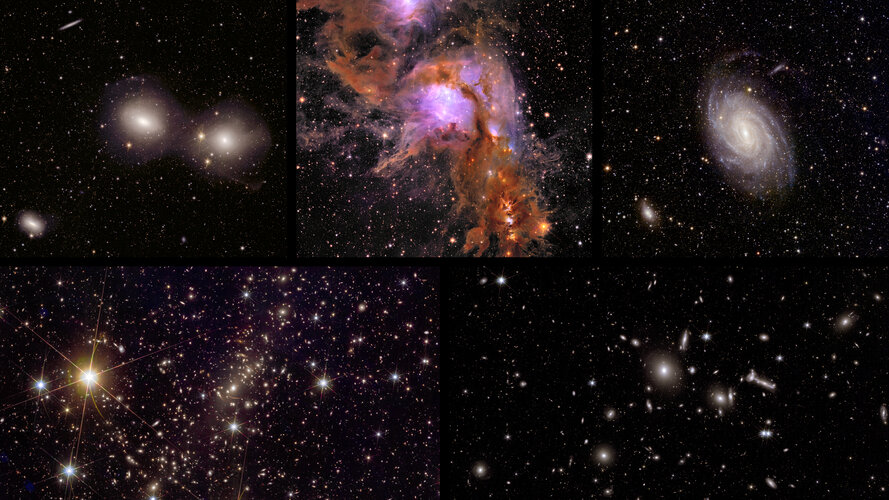

Access the video
The images obtained by Euclid are at least four times sharper than those we can take from ground-based telescopes. They cover large patches of sky at unrivalled depth, looking far into the distant Universe using both visible and infrared light.
“It’s no exaggeration to say that the results we’re seeing from Euclid are unprecedented,” says ESA Director of Science, Prof. Carole Mundell. “Euclid’s first images, published in November, clearly illustrated the telescope’s vast potential to explore the dark Universe, and this second batch is no different.
“The beauty of Euclid is that it covers large regions of the sky in great detail and depth, and can capture a wide range of different objects all in the same image – from faint to bright, from distant to nearby, from the most massive of galaxy clusters to small planets. We get both a very detailed and very wide view all at once. This amazing versatility has resulted in numerous new science results that, when combined with the results from Euclid’s surveying over the coming years, will significantly alter our understanding of the Universe.”
While visually stunning, the images are far more than beautiful snapshots; they reveal new physical properties of the Universe thanks to Euclid’s novel and unique observing capabilities. These scientific secrets are detailed further in a number of accompanying papers released by the Euclid collaboration, made available tomorrow on arXiv (linked below), together with five key reference papers about the Euclid mission.
The early findings showcase Euclid’s ability to search star-forming regions for free-floating ‘rogue’ planets just four times the mass of Jupiter; study the outer regions of star clusters in unprecedented detail; and map different star populations to explore how galaxies have evolved over time. They reveal how the space telescope can detect individual star clusters in distant groups and clusters of galaxies; identify a rich harvest of new dwarf galaxies; see the light from stars ripped away from their parent galaxies – and much more.
Euclid produced this early catalogue in just a single day, revealing over 11 million objects in visible light and 5 million more in infrared light. This catalogue has resulted in significant new science.
“Euclid demonstrates European excellence in frontier science and state-of-the-art technology, and showcases the importance of international collaboration,” says ESA Director General Josef Aschbacher. “The mission is the result of many years of hard work from scientists, engineers and industry throughout Europe and from members of the Euclid scientific consortium around the world, all brought together by ESA. They can be proud of this achievement – the results are no small feat for such an ambitious mission and such complex fundamental science. Euclid is at the very beginning of its exciting journey to map the structure of the Universe.”



